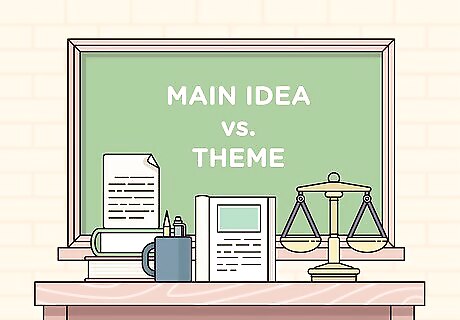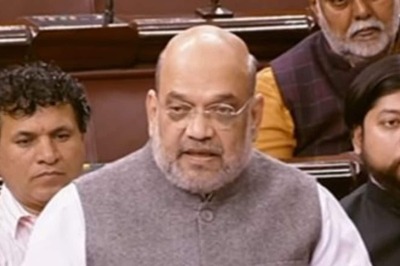
views
Introducing Your Students to Literature

Begin with texts they're familiar with. When students hear "literature," they may groan at the thought, which is why it's important to hook them with things they're already familiar with. Use song lyrics to introduce poetry or comic books to introduce narrative structure, for instance. For younger students, try nursery rhymes and songs. For middle schoolers, use comic books, song lyrics, or even kid's magazines. With high schoolers, try popular song lyrics, blog posts, or short stories/novellas that lead to movies. These familiar texts will help bring your students into literature without as much drama. With younger students, make sure you're picking out books that are at their reading level. They won't enjoy reading books that they struggle with.

Work up to longer works. Don't dive into a 500-page novel (or a short chapter book for younger kids). Start with short stories and poems, then move up to short novels or novellas. Slowly build up your students' attention spans for longer works. If you throw a long classical novel at a student who's never read a short story, they're likely to reach for the Cliff Notes without even trying. For instance, starting with George Elliot's Middlemarch may be a bit much, but short stories like "A Good Man is Hard to Find" by Flannery O'Connor or the novella Rita Hayworth and the Shawshank Redemption by Stephen King may be a bit more accessible to high schoolers.

Open up the curriculum to more recent texts. Classic literature sticks around for a reason, but many students have trouble connecting to older texts. Make sure to include some novels and short stories from the 21st century, ones that are more likely to resonate with students in a digital age. Try balancing out older texts by reading contemporary texts that deal with similar themes. Students may be more willing to engage with the older variety if they can view them through a contemporary lens. Also, reconsider what you deem "literature." Spoken word poetry, blogs, and adult comic books (such as Alison Bechdel's Fun Home) can all have literary value.

Let students pick out some of their own texts. Give them an approved list and then let them pick something they're interested in. If they have some choice in what they read, they're more likely to be engaged with the text. If possible, allow approved choices outside of the reading list, as well. Once you find a book that kids really like, have the whole class read it together. Reading as a class helps you make sure that everybody's following along.
Working through a Text

Get the primary details down first, such as plot, setting, and characters. Your students can't move on to analyzing a text without first understanding the basics of the story. Help them work through these primary elements as a group, particularly the first time you do it. In elementary school, students will likely need lots of examples, while once they reach high school, one example may be enough. For instance, you could write out the main plot points on the board as your students describe them to you. You can also do things like have your students make predictions about what will happen next.

Have the students write out the main idea. The main idea is what the story is mostly about. It's essentially the plot of the story in a single sentence. Boiling the plot down to the main idea will help students see it better as a whole. You can work together on writing out main ideas in class. For elementary and middle school students, pick familiar stories, such as fairy tales or Disney movies. For high school students, try fairy tales or recently released movies. Then, assign one for homework.

Teach students how themes differ from the main idea. Whereas the main idea essentially summarizes the plot, the theme is the moral lesson or message of the story. You might say it's why the story was written. Use the same examples you did for the main idea and point out how the themes are different. For instance, the main idea of Cinderella might be that a girl is treated harshly by her stepfamily and then goes to a ball and falls in love with a prince. The theme might be "Be kind and work hard." Stick with short, simple themes for elementary and middle school students. In high school, you can work on more complex themes and incorporate the idea that stories can have more than one theme.

Create open discussions with specific, directed questions. Avoid vague questions, making sure you give direct parameters for what you want. Otherwise, students won't know how to respond. In addition, give students time to think about the questions before you ask them to talk about them. For instance, you could give them 5-10 minutes to write about them before turning it into a class discussion. Alternatively, you could send the questions home with the students to talk about the next day. For example, instead of saying, "What do you like about the book?" ask a more direct question, such as, "Which characters do you think make good choices? Name at least 1 character who makes good choices and why you think they do. Are they rewarded for those good choices?" This kind of question can work for younger and older students; just be sure to adjust it as needed to your students' level.

Encourage students to talk about being accepting of different answers. When a student throws an answer out about a theme or something that doesn't necessarily have one answer, ask them to explore it. Get them to back up what they're saying with what they've read in the text. For example, you might say, "That's an interesting thought. What in the text makes you think that?" By asking students to expand on their ideas and not dismissing them outright, you encourage them to speak up. Then, by asking them to back up what they say, you're teaching them to analyze and interpret the text.

Allow multiple drafts when asking students to write. When students are learning how to write about literature, it can be difficult to get going in the right direction. For at least the first essay, break it down into multiple drafts that they turn into you. For the first draft or two, focus on completion and improvement, helping students learn how to write better about literature.
Engaging Students in a Story

Try cooking with younger students. Many books including cooking or food as a main part of the story. Cooking foods or drinks you find in the books with your class can help the story come alive for them. Plus, you'll be teaching other skills, such as math and cooperation. For instance, try making green eggs and ham with Dr. Seuss's book or molding chocolate for Charlie and the Chocolate Factory.

Let students dress up as characters. Dressing as a favorite character in a book can help connect students to a story, particularly elementary and middle school students. For older students, try having a party using a book as a theme. For example, you could have a swinging '20s party after reading The Great Gatsby.

Break students into small discussion groups. The more you can get the students talking, the more they'll take from the book. Discussion groups can work for younger or older students; you just have to tailor the organization to the age group. Have students work on common goals together that they can report on or turn in for credit. For younger students, try assigning each student a job, such as a recorder, searcher, reader, and so on. Give them tasks like naming characters and answering simple questions. With older students, write open-ended discussion questions and have them jot down 2-3 of the main points they come up with.

Encourage students to retell the text in their own way. Have them write a song about the story or create a play, for instance. Alternatively, they could make a video, write a blog post, or tell the story through Tweets or text messages. Let them get creative, as long as they incorporate the main themes and plot. Let them use whatever technology they think is fun at the time, which changes from year to year (and sometimes day to day).



















Comments
0 comment